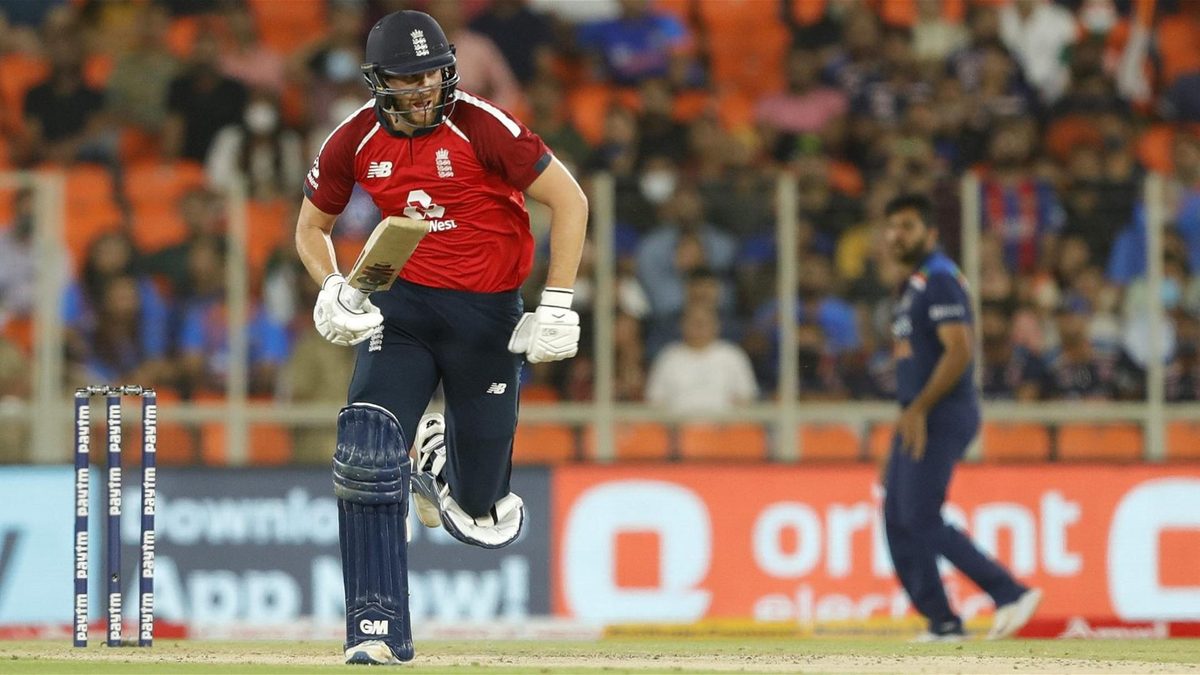
Ben Gardner examines England’s lacklustre batting performance in the second T20I against India.
Subscribe to the Wisden Cricket YouTube channel for post-match awards, player interviews, analysis and much more.
You know you’re in a decent position as a team if the main debate over your side isn’t the players in your XI, but their arrangement in the batting order. With a couple of notable exceptions – Joe Root and Alex Hales in particular – there’s little debate that England have assembled not just their six best T20 batsmen, but six of the best in the world.
In a way, England’s innings today was just another demonstration of that. They lost Jos Buttler for a golden duck, found little rhythm through their innings, and made clear their frustration at the slowness of the surface and their own lack of timing. Yet, they still scraped up to a score only just below par. This game was lost more with ball than with bat, with Mark Wood’s absence keenly felt.
Still, this shouldn’t just be written off as a bad-but-not-all-that-bad day at the office, because there are lessons for England to learn, and it’s the batting order that should come into focus.
England’s problem, such as it is, is that five of their top six, excluding Eoin Morgan, would ideally bat in the top three. At the moment, they are set up to maximise their strengths, with Buttler, arguably England’s best opener and their best finisher, up the top, Dawid Malan as the sole anchor at No.3, Jonny Bairstow at No.4 to take down the spinners, and Eoin Morgan and Ben Stokes in the finishing roles.
As a base strategy, it’s good, even if some might quibble with a few details. But it’s hard not to wonder if, having settled on a batting order, England might now be guilty of forgetting the thinking that led them to it in the first place.
As with most questions about England’s T20 batting, the debate revolves around Malan. Today, he made 24 off 23 balls, the type of innings his detractors suggest is the ever-present downside of his get-set-and-explode method. To an extent, they are right, but England are surely aware of and content with the risks Malan’s method poses. There will be times, like today, when it costs them. But, as has been the case more often than not in his career so far, it will allow him to make match-defining scores, with the out-and-out aggression of the rest making up for his sluggishness when he does fail.
T20 cricket is, at its heart, a game of risk and reward, and of evaluating and adjusting both as the contest progresses. Malan’s is just a different type of risk.
But not all 23-ball 24s are made equal, and Malan’s innings today was more costly than it otherwise would be, because of when it came. With Buttler gone early, Malan came in inside the first over, and by the end of the Powerplay was 18 off 18. India were even able to chalk off two overs of their seam-bowling all-rounders, and England were behind in the game. While Roy’s strike-rate at the same point was only slightly better, he was attempting to attack significantly more than Malan was. Roy set out to score quickly and underperformed. Malan achieved what he intended, and it hurt England.
It is worth saying again that this is only a small concern. Had Malan done what he so often does, and gone on from such a start to finish 70 off 45, say, the whole game might have turned out different. But with England having so many other top-order options elsewhere, would it not be worth, if a wicket falls inside the first two or three overs, asking Bairstow to go and pummel the new white ball, as he does in ODI cricket and in the IPL?
Ideally, Malan could then come in in overs 7-10, which tend to see slower run rates in any case, another factor that lessens the downside of his early-innings approach. England’s lengthy batting line-up, which had Adil Rashid carded to come in at No.11 today, lessens the impact of losing a middle-order option, which promoting Bairstow would do.
England’s win in the first T20I was kick-started by some creative thinking right from the start of the game, with Rashid called on to take the new ball and dismissing Virat Kohli. The same flexibility in their batting order would see them maximise the varied strengths of their batsmen.








